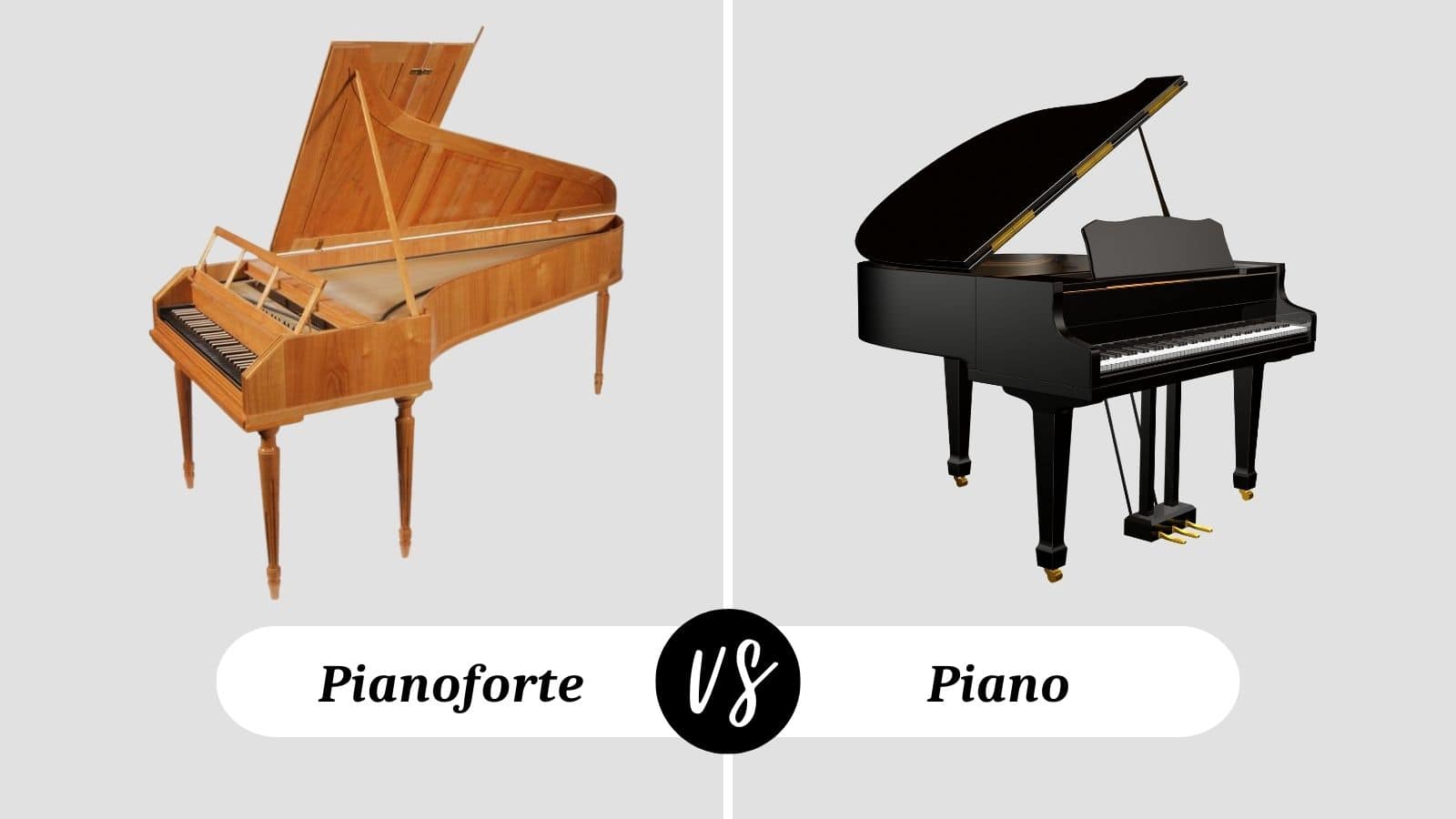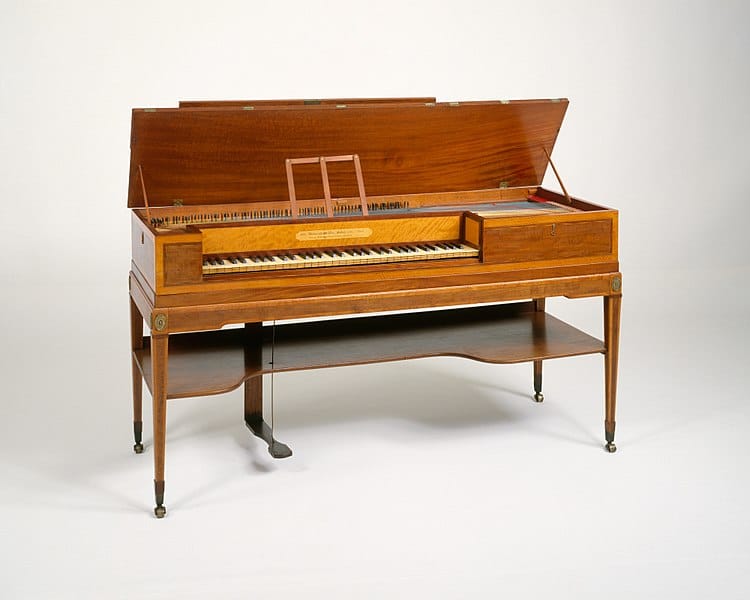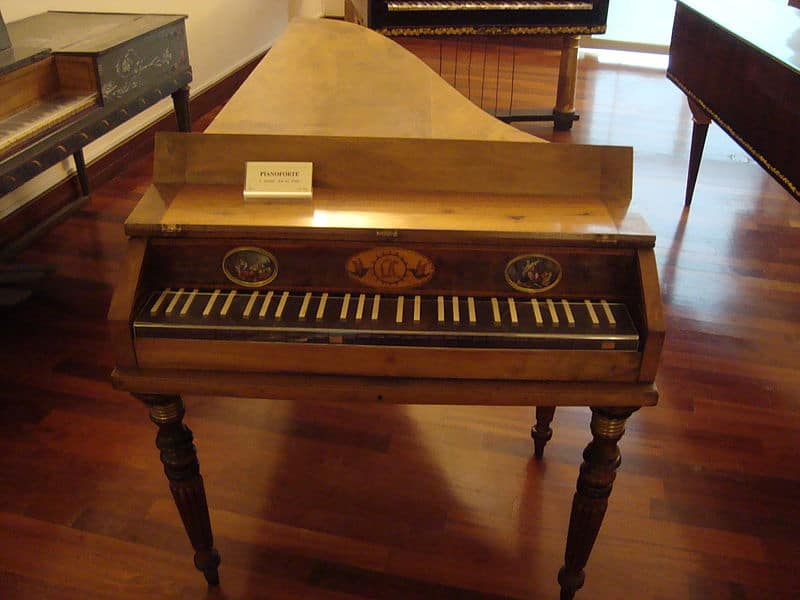
Distinctions when it comes to the humble piano can be more complex than one might first imagine. There’re fortepianos, upright pianos, miniature pianos, console pianos, grand pianos, pianolas, player pianos, and electric pianos and the list continues.
Some of these pianos are perhaps more common, and easier to understand than others. Each has its idiosyncrasies.
The piano is a generic term that includes many if not all of the instruments above, plus others. We tend, and rightly so, to imagine a majestic concert grand or more modest upright when we hear the word.
This umbrella noun can cause misunderstanding at which point maybe a more precise description is required.
Not all pianos, for instance, have eighty-eight keys covering the seven-and-a-quarter octave range. Many pianos were made for spaces far less awe-inspiring than the homes of the Steinway and Bechstein grand pianos.
These instruments, still very much pianos, were five or six-octave instruments cleverly designed and manufactured for an average home or apartment that could not accommodate anything larger.
As I recall, Elkhart used to make a beautifully warm-toned smaller piano with a six-octave range.
Not every piano has the same shape even though it too falls under the umbrella term. Consider the rather splendid square pianos that were new around the mid-1700s.
These pianos have strings that lie horizontally across what is a rectangular case. These often very fine instruments were mostly manufactured in Vienna, Austria as well as in England. They proved to be popular instruments as they were affordable and produced a perfectly acceptable tone.
The difference between types of piano is a long list. Included on that list is the pianoforte. It isn’t so distant an instrument that it is unrecognisable as a piano, but several aspects about it separate it from the modern understanding of what a piano is.
Pianoforte vs Piano
Before we delve deeper into this comparison, let’s quickly point out that the pianoforte is frequently referred to as a fortepiano. In a sense, this might be more helpful as we pick apart the characteristics of this instrument.
As the name implies the instrument can play forte and piano (strongly and softly). As its predecessor was a harpsichord, clavichord or spinet, this new instrument presented performers and composers with a whole new world of sonorities to explore.
The pianoforte then is commonly used to describe the keyboard instrument you may see Haydn, Mozart or Beethoven playing or composing.
They came into being following the brilliant innovations of Bartolomeo Cristofori who is credited with designing and building the first piano; or rather fortepiano. These instruments moved the earlier keyboards to one side.
They were revolutionary. What truly distinguished pianofortes was the way the strings created a tone.
A harpsichord, for example, plucks the string when the key is depressed whereas the new pianoforte instrument used hammers to strike the string. Not only is the sound different, but it also feels very different to play.
Leather-covered hammers hit the strings on the fortepiano/pianoforte. The strings themselves, in the first instance, were not vastly different from those of harpsichords, but this would soon change. Equally, the casing of the pianoforte was quite slight in comparison to today’s robust pianos.
Pianofortes were a very responsive instrument with a reasonably light touch. This is quite different from many of the pianos built today.
This naturally varies from piano to piano in the contemporary market and choosing an instrument is quite a challenge as you may need to try several instruments until you discover the right one for you.
If you have played or heard early Mozart or Haydn piano works, you’ll notice the range these composers use is around five octaves. Unlike today’s piano, the pianoforte’s span of notes was restricted initially to between four or five octaves.
It didn’t take very long, however, before composers and manufacturers pushed these limits. Look at mid-period Beethoven piano sonatas and you’ll see just how far the pianoforte’s range altered.
The two or three pedals we are familiar with on 21st-century pianos were not the same on the pianoforte.
On the modern piano, you can have a sostenuto (M), una corda (L) and a sustain pedal (R). Each of these pedals is to create a different effect on the piano. The function of the middle pedal can vary considerably from one piano to another especially if it is an older instrument.
On the pianoforte, there may have been pedals, hand stops or leavers or both however their functions were not consistent between models.
As the pianoforte evolved towards the pianos of the 19th century then it becomes far more recognisable. This is true of its tonal qualities as well as its appearance.
The construction of the pianoforte early on did not include braces or even a metal frame that became the central component of the piano. As such the sound generated by the early pianofortes was quite brittle towards the top of the range and a little buzzy at the lower end of the instrument.
Tones at the middle range certainly are close to the pianos of today but no real match as their sonority is far softer. Notes decayed quickly on these instruments which are dramatically different from today’s pianos.
What is referred to as the action of the pianoforte is radically from the sophistication of contemporary pianos. Whilst there are parallels in as much as it’s a hammer that strikes the string but this is the tip of the proverbial iceberg.
Pianofortes varied in the length of the key, type of string, hammer covering and so on. Different inventors were constantly trying new ideas out on their instruments to meet the demands of players and composers alike.
There are many detailed accounts regarding the evolution of the piano’s action but remember it occurred over nearly three hundred years and has not stopped yet.
In summary, then, the pianoforte was an instrument that preceded the modern-day piano for quite a period. It was in its first incarnation a very different instrument, quite frail and lacking in the rich sonorities of the pianos we play today.
Pianofortes are sometimes used to recreate authentic performances of early Classical works, but we are so used to the sound of the piano that you have to be ready for a unique listening experience.



could you comment on any differences in fingering technique or positioning of the hands between the pianoforte and modern pianos? Specifically, does the former require more “rigidity” to control the pressure exerted on the keys? Thank you!